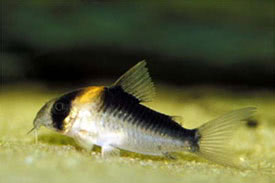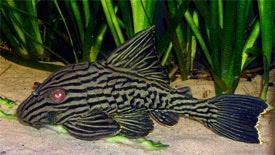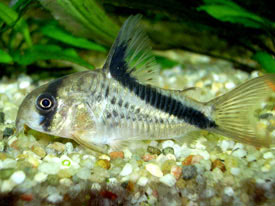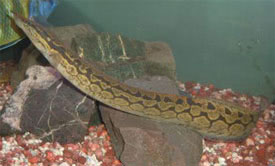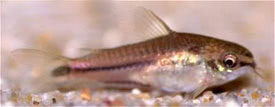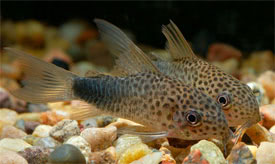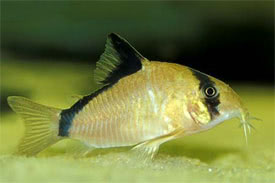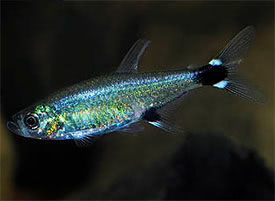
 Magyarul / Hungarian
Magyarul / Hungarian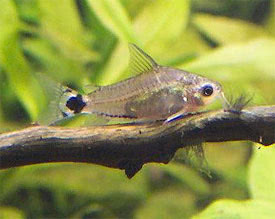

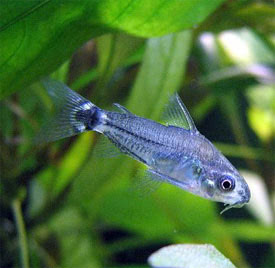
- Scientific name: Corydoras hastatus
- Synonym: Microcorydoras hastatus
- Common name: Dwarf corydoras, Pygmy corydoras, Tail spot pygmy catfish, Mini spotlight corydoras
- Group: Catfishes
- Habitat: South Amerika, Brazil
- Size: 3 cm
- Biotope: In the waters of Rio Guapore
- Social behavior: Peaceful, schooling fish. Do not combine with medium to large sized fish
- Diet: Omnivorous, give them small live foods; small aquatic insects, tablets; small flakes.
- Breeding: Quite hard
- Tank: Minimum 30 litres
- Population: 5 fish for 40 litres
- Decoration: Use dark soil and tempered light, with a dense vegetation
- Temperature: 22-26°C
- pH: 6-7
- Hardness: 1-15NK°
- Lifespan: 5 years
Description: The body of Corydoras hastatus is more elongated than other Corydoras species. The Dwarf corydoras has an olive back and yellowish sides, with a pronounced lengthwise stripe edged with gold. The caudal penuncle is marked with black spot which is surrounded by a thin white marking. The fins are transparent. Males are smaller, more slender and have a more pointed dorsal fin than females. Pygmy corydoras often feeds in mid-water, and is consequently less flattened ventrally than the other bottom-feeding types. It is also quite active and not as nocturnal as other corydoras, especially when kept in a small shoal. Due to its small size, this fish can be kept in a relatively small aquarium.
Spawning of well-conditioned fish may be initiated by the addition of cooler water. The fish lays its eggs in dense vegetation and the adults do not guard the eggs. The female holds a single egg between her pelvic fins, where the male fertilizes them. Then the female swims to a suitable spot, where she attaches the sticky egg. Around 7 to 15 eggs are spawned in one day, and spawning occurs for three to four days. The eggs hatch in three to nine days. Fry are very small and need infusoria the first few days. The fry mature in six to eight months.






























